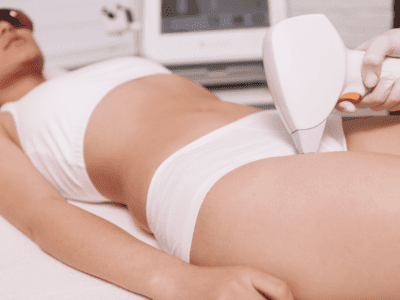
Hormonal Spiral (Mirena)
What is a hormonal spiral?
The hormonal spiral is one of the modern contraceptive methods and helps women to achieve effective contraception. In this section, we will give a basic description of the hormonal coil and briefly look at its history.
A hormonal spiral is a small device that is inserted into the uterus and is used to prevent pregnancy inside the uterus. The spiral is covered with a T-shaped plastic frame and releases hormones inside. The hormonal spiral has two main components: the plastic frame and the hormone secretion system. The plastic frame keeps the spiral in place inside the uterus, and the hormone secretion system releases low amounts of hormones continuously, which protects the environment inside the uterus against pregnancy.
The history of the hormonal spiral is quite interesting. The first hormonal spiral, Mirena, was launched in 2003 and has since helped many women manage their birth control. The development of Mirena is considered an important step forward in contraception and is now used in many countries.
What is Mirena?
Mirena is one of the most popular brands of hormonal spiral and is widely used among women. In this section, we will describe Mirena and look at how it is used.
Description of Mirena
Mirena is a hormonal intrauterine device (IUD). This is a device where Mirena is placed inside the uterus and works effectively to prevent pregnancy. Mirena is designed to provide long-term contraception and contains a hormone called levonorgestrel. This hormone changes the environment inside the uterus so that it is not suitable for pregnancy.
Using Mirena
Mirena is inserted into the uterus by a health professional. This is usually done in an examination room and under local anesthesia. Once inserted into the uterus, Mirena can be effective for many years to provide long-term contraception. The use of Mirena has many advantages over other forms of contraception and is the method of choice for many women.
In this chapter, we have presented the basic definition of the hormonal spiral and important information about what Mirena is. Now, in the next chapter, we will look in detail at how the hormonal spiral works.
How does the hormonal spiral work?
Understanding how the hormonal spiral works is important for evaluating the effects of this contraceptive method. In this section, we will examine the functioning of the hormonal spiral in detail.
How the Hormonal Spiral Works
Internal Structure of the Hormonal Spiral
The hormonal spiral is a contraceptive device that works when inserted into the uterus. The internal structure is quite simple. The spiral is covered with a T-shaped plastic frame. This plastic frame keeps the spiral in place inside the uterus. This T-shaped device, which is inserted into the uterus, is very effective despite its small size.
Hormone Secretion Mechanism
The most important feature of a hormonal spiral is that it continuously releases hormones into the uterus. It usually contains a hormone called levonorgestrel. This hormone is secreted into the uterus in low doses from a reservoir in the internal structure of the spiral. This mechanism of the hormonal spiral protects the environment inside the uterus against pregnancy. Levonorgestrel makes it difficult for sperm to pass through the cervix and reduces sperm motility by affecting the mucus in the uterus. Therefore, the sperm are less likely to fertilize the egg.
How does it affect the intrauterine environment?
Changing the Intrauterine Environment
The hormonal spiral changes the environment inside the uterus in a way that is not suitable for pregnancy. The release of the hormone levonorgestrel thins the endometrium in the uterus. This makes it difficult for the embryo to attach to the uterus, which is necessary for pregnancy to begin. It also causes the mucus in the uterus to thicken and block the passage of sperm through the cervix. These factors work effectively to prevent pregnancy.
Effects on Fertility
The effects of the hormonal spiral in the uterus are temporary. Once the spiral is removed, the intrauterine environment quickly returns to normal and fertility is restored. This is an important advantage for women seeking hormonal contraception.
In this chapter, we have explained in detail how the hormonal coil works. Now, in the next chapter, we will look at the advantages of the hormonal coil and why effective contraception is important.
Advantages of Hormonal Spiral
The hormonal coil is an important option of modern contraception and has many advantages. In this section, we will examine in detail the advantages that a hormonal coil can offer.
Effective Birth Control
Birth Control Success Rate
The hormonal spiral has a high success rate for effective contraception. The continuous release of the hormone levonorgestrel into the uterus in low doses offers a highly effective way to prevent pregnancy. When inserted correctly, the hormonal spiral has a high probability of being used as a successful contraceptive. This allows women to feel safe during periods when they do not want a pregnancy.
Comparison with Other Contraceptive Methods
One advantage of the hormonal spiral is the convenience compared to other birth control methods. Traditional contraceptive methods may require a number of requirements and reminders, such as daily medications, injections or condoms. In contrast, the hormonal spiral works effectively for an extended period of time after it is inserted into the uterus by a health professional. This can make users' daily lives easier and birth control more reliable.
Relieves Painful Menstrual Periods
Menstrual Pain
Another advantage of the hormonal spiral is its ability to relieve menstrual pain. The hormone inside can reduce menstrual pains and cramps by reducing muscle activity inside the uterus. This is a great source of relief for many women. A pain-free menstrual period can improve overall quality of life and help to carry out daily activities more comfortably.
Benefits for Women's Health
In addition, the hormonal spiral may have other benefits for women's health. In some cases, the use of a hormonal spiral can provide regular menstrual cycles, improve certain conditions such as polycystic ovary syndrome and relieve symptoms of endometriosis. Therefore, the hormonal spiral not only provides contraception, but can also contribute to women's overall health.
In this chapter, we have looked in detail at the advantages of the hormonal coil. Now, in the next chapter, we will look at the possible side effects of the hormonal coil and who should not use it.
Frequently Asked Questions for Mirena
To answer frequently asked questions about the hormonal coil (Mirena), in this section you will find important information about the use of Mirena.
Who is a hormonal spiral suitable for?
The hormonal spiral (Mirena) is a suitable contraceptive for many women. However, there are certain criteria for who can use a hormonal spiral.
Who Can Use a Hormonal Spiral?
– Those who do not want to have children: For women who do not plan to have children in the future or who have already completed the number of children they have, the hormonal spiral can be a good option.
– Low Risk Sexual Activity: For those with low-risk sexual activity, the hormonal spiral may be recommended as an effective contraceptive.
– Menstrual Period Pain: For women who experience painful menstrual periods, a hormonal spiral can help relieve this pain.
– Not Suitable for Other Contraceptive Methods: For women who cannot use or are not suitable for other forms of contraception, the hormonal spiral can be an alternative.
Frequently Asked Questions About Mirena Use
Below are some frequently asked questions and answers about the use of the hormonal spiral:
- How is Mirena Inserted?
- Mirena is inserted into the uterus by a healthcare professional. Local anesthesia or sedation may be used during this procedure.
- How much does Mirena cost?
- The cost of Mirena can vary depending on geographical location and health insurance coverage. Often considered a long-term contraceptive, its cost is considered affordable for many users.
- How Many Years Is Mirena Used?
- Mirena can usually be used effectively for 5 years after insertion. However, it can be replaced when it expires or needs to be removed for any other reason.
It is important to contact a health professional or gynecologist for more information and detailed answers about the use of the hormonal spiral (Mirena).

Dr. Tuba Nadide Yilmaz
Obstetrician Dr. Tuba Nadide Yilmaz is a leading expert in her field, specializing in genital aesthetics and health services with extensive knowledge and experience. She offers comprehensive guidance for maintaining a healthy lifestyle along with customized solutions that cater to individual patient needs using modern treatment methods. We endeavor to restore your self-confidence. Please feel free to contact us for any questions or appointment requests. Our top priority is your health.









